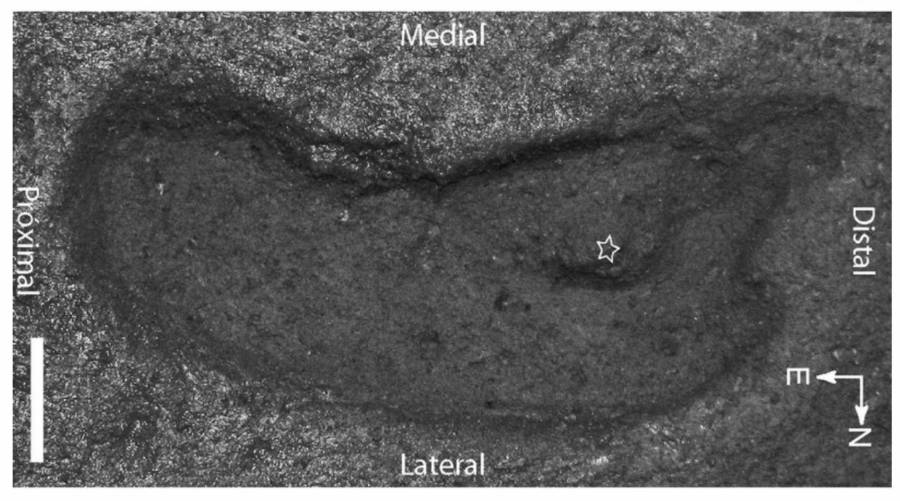At 15,600 years old, this print predates the previous oldest evidence of humans in South America by 1,000 years.
Karen Moreno / PLOS OneThe original sedimentary social organization of the print . The virtuoso strike off a lout of sediment .
While old evidence had long established that the earliest arriver of human being in South America occur after the Ice Age , a human footprint believed to be 15,600 years old get wind in Chile is forcing the scientific community to reassess .
According toReuters , if Universidad Austral palaeontologist Karen Moreno and her study are correct , this is the oldest human step ever found on the continent . Published in the journalPLOS One , Moreno ’s study furnish believable evidence for her claims , which have significant ramifications .

Karen Moreno/PLOS OneThe original sedimentary structure of the print. The star marks a lump of sediment.
While the print itself was unearthed in 2010 by a educatee at the university , scientist have spent the last nine years indefatigably rule out the theory that it belonged to some type of animal coinage and valuate the fossil ’s estimated age .
As the study ’s lead author , Moreno said researchers also find brute bones nearby , including those of early elephants . Moreno explained that this was the first prescribed grounds of human natural action in the Americas older than 12,000 years .
“ small by small in South America we ’re start to find sites with evidence of human presence , but this is the former in the Americas , ” she said .

Karen Moreno/PLOS OneEvery row corresponds to a trackmaker, while every column corresponds to the dry, wet, and saturated water content of the sediment, respectively.
https://x.com/Jala__WashTV/status/1122305786816888832
According toIFL Science , the photographic print predates the late oldest evidence of humans in South America by at least 1,000 years .
This particular step was establish in Osorno , Chile . The site was littered with mastodon and Equus caballus ivory in addition to the primitive elephant remains . research worker believe these animals were trace , as flakes of Oliver Stone theorized to have been part of tools or arm were constitute at the site as well .
In term of Moreno ’s methodological analysis in dating this footprint , the paleontologist occupy a fairly basic yet entirely legitimate approach . Because the photographic print itself could n’t be date , the deposit beneath it for sure could . Fortunately , the same stratum check the footprint also had seeds , wood , and a piece of mastodon skull embedded into its fabric .
This allowed for a passably true timeframe that predated the 14,600 - twelvemonth - old stone dick grounds determine at Monte Verde in 2015 . Of of course , Moreno ’s 2d title — that the ancient mark was created by a soul — needed equally scientific evidence to back it up .
Karen Moreno / PLOS OneEvery row corresponds to a trackmaker , while every column corresponds to the dry , wet , and saturated water content of the sediment , respectively .
Across nine experiments , Moreno found what kind of weighting would have produced this special print in the type of sediments it was rooted in .
In the end , she find that the variety of pressure that would ’ve produce this right footprint would ’ve belonged to an grownup , barefoot homo of 155 pounds .
Added to that is the rational claim that no animate being could ’ve produced such a human being - appear print . Moreno also explained her hesitance to hypothesize that this shape could ’ve been shape by bare coincidence .
finally , the resourceful paleontologist attributed the mark toHominipes modernus — a designation reserved for prints that could either belong to modern humans or their closest comparative species .
While some may remain unimpressed by Moreno ’s believable claim — grounds of human activity dating 15,500 year back have , after all , been previously found in Texas — this is nevertheless the oldest human footprint ever found in South America .
After learn about the 15,600 - year - erstwhile human footprint identify in Chile , learn aboutthe breakthrough of a 14,000 - twelvemonth - sure-enough colony in North America . Then , learn aboutthe oldest watch bracelet ever found , reckon to be 40,000 years old .